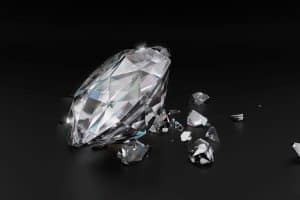
This article may include affiliate links and elements that were carefully created by our team using advanced ai to help you envision the best style advice.
Unlike sterling silver, brass, or gold plated necklaces, stainless steel does NOT rust or tarnish. Stainless steel is composed of steel and chromium, and in some cases may contain a small percentage of other metals. It’s the chemical element chromium that forms a protective layer over the steel. This layer prevents rusting, tarnishing, and color changes.
While stainless steel can’t rust or tarnish, it is possible for it to become scratched or stained. Keep reading to learn about the nuances of your stainless steel jewelry and find out how you can keep it looking as good as new! We address some common questions below.
How Do You Keep Stainless Steel Clean?
Easy! Since we’ve determined that stainless steel doesn’t rust or tarnish, it doesn’t take much to keep it clean and well-maintained. To clean it, all you need is warm water and some mild dish soap. Mix a bit of the soap with the water, and dip a soft cloth into it. Use the cloth to gently wipe down your jewelry until you’re satisfied with its appearance. You can then rinse the jewelry with freshwater, dry it with a towel, and lay it flat to finish air-drying.
Once it’s clean, you’ll want to mind how you store it. After all, it can scratch! It’s best to keep stainless steel separately from your other jewelry. Storing it in individual pouches away from other metals will help keep it looking shiny and new.
Are Stainless Steel Necklaces Waterproof?
In short – yes, but also not exactly.
We’ve discussed how stainless steel is generally safe from rust and tarnish. So if you shower with your jewelry on, it should be just fine. If you were to test your stainless steel by leaving it in a cup of tap water overnight, it shouldn’t rust. But while most stainless steel is fairly similar in composition, we can’t say the same about various water sources.
Your tap water or distilled water shouldn’t affect your stainless steel jewelry. However, we don’t recommend you take your stainless steel necklace into the pool or the ocean. The high contents of chlorine and salt respectively do not react well with any type of jewelry. Regardless of stainless steel’s durability, there’s no real reason to expose it to elements that may damage it.
Is Stainless Steel or Sterling Silver Better For Jewelry?

This, of course, is largely dependent on personal preference. As mentioned previously, unlike stainless steel, sterling silver is far less durable. Sterling silver is composed of approximately 92.5% silver and 7.5% of another metal, often copper. Silver itself is quite soft, and despite the addition of another metal, it is still far more susceptible to scratches than steel and it will tarnish over time if not properly cared for. However, depending on what aesthetic you’re looking for, sterling silver may win out in a couple of categories: luster and weight.
Sterling silver is far brighter and more lustrous than stainless steel. Stainless steel does have a shine to it, but it is noticeably duller than silver. Silver is also lighter than steel, taking a bit of the load off of you. Some prefer a heavier weight though!
Aesthetically, we may have to give this one to sterling silver. But if we’re talking long term, stainless steel will hold out so much better over time.
Our research shows one additional benefit to stainless steel as well – it’s hypoallergenic.
For those with allergies or skin sensitivities, stainless steel can be a fabulous choice. Metals such as copper or brass can react harshly with skin, and even if your jewelry is plated with another metal, that plating may eventually wear away. Stainless steel jewelry contains minimal amounts of other metals and is generally unplated – so what you buy stays the same over time.
How Can You Tell if Jewelry is Real Stainless Steel?
Now, this can be tricky. Not all stainless steel is made equal, so while the following tests are capable of determining whether you’ve got the real deal, it’s difficult to guarantee. Scientific tests using various types of acid can get you far more certain results, but also, we don’t recommend playing with acid at home. So let’s take a look at some simple, everyday tests you can perform!
Check the Weight
Stainless steel is one of the heavier options you have for jewelry. If your jewelry feels light and airy in your hand, it’s more likely silver or aluminum. Ideally, weigh your so-called stainless steel against another piece of jewelry that is confirmed sterling silver or the like. If you can feel a significant weight difference, the first is likely legitimate stainless steel.
Check the Shine
Stainless steel maintains a nice shine, particularly when wiped with a cloth. This test should be done in partnership with the weight test because as previously mentioned, sterling silver shines much brighter than stainless steel. So if you’ve got a good shine plus a fairly heavy weight, it’s almost definitely stainless steel.
Check for Rust
Okay, this one’s pretty obvious. Got rust? Not stainless steel.
True Stainless Steel will LAST.
There you have it! Stainless steel is definitely a great option for your necklaces if you’re looking for long-lasting, low maintenance jewelry. It’ll hold up well over time with minimal care. At best, it’ll stay near perfect, and at worst, it’ll get a scratch or two. You can rest assured knowing that rust and tarnish won’t come for your stainless steel pieces. Cheers!



